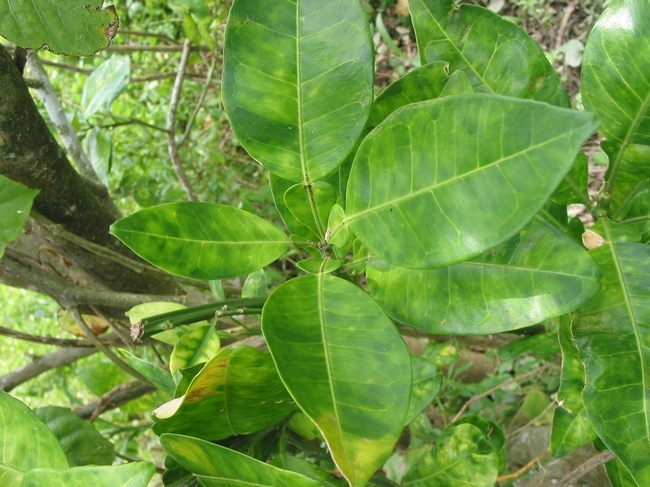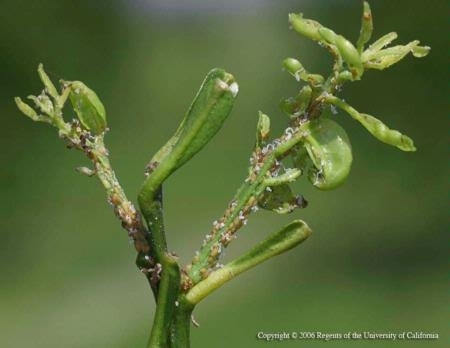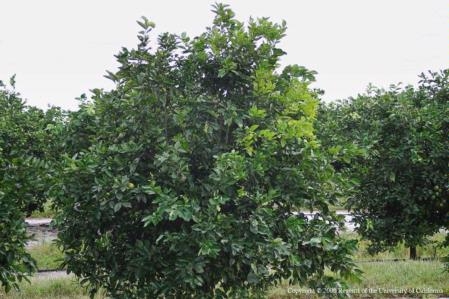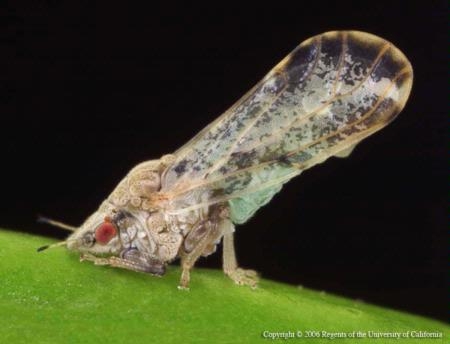Posts Tagged: huanglongbing
Micronutrient deficiency can look like HLB infection
Familiarity with symptoms caused by micronutrient deficiencies is important for citrus growers and pest control advisers to ensure such maladies are not confused with symptoms of Huanglongbing, reported Cary Blake in Western Farm Press.
Neil O’Connell, UC Cooperative Extension advisor in Tulare County, a citrus expert, recommends that field staff also be well versed on these issues since they are in the field daily during the citrus harvest.
Huanglongbing, a disease spread by Asian citrus psyllid, is the worst citrus disease in the world. The disease was detected on one tree in Southern California in March, the first such find in the state. Officials are asking for farmers and home gardeners to be on the look-out for other HLB-infected trees.
O'Connell says deficiencies of zinc, iron and manganese can resemble leaf symptoms found in trees with HLB.
"Some deficiencies have fairly similar symptoms," O'Connell said. "If you are very familiar with deficiency patterns in these elements then it is much easier to separate this out. You can recognize whether the problem is zinc, iron, manganese, or another deficiency while possibly ruling out HLB."
A distinguishing characteristic of HLB infection is a yellow area that crosses from one interveinal area to another, O'Connell explained.
Reaching the public critical when contending with invasive pest threats
The discovery of Huanglongbing disease in a Hacienda Heights backyard last month poses a new challenge for UC Cooperative Extension and other scientists, reported Kate Campbell in AgAlert.
"We're really good at providing detailed information to researchers, agricultural commissioners, Cooperative Extension advisors, inspectors and border protection agents about what to look for and how to respond," said Beth Grafton-Cardwell, UC Cooperative Extension specialist in the Department of Entomology at UC Riverside. "We can reach thousands of people that way."
But with Asian citrus psyllid and Huanglongbing, "we're dealing with backyard situations, which is a whole new ballgame."
Campbell attended a conference in Davis last week focused on "Educating the public about new invasive species threatening California's plant ecosystems." Conference topics -- Huanglongbing disease, Asian citrus psyllid, light brown apple moth (LBAM), quagga and zebra mussels, European grapevine moth, sudden oak death, Japanese dodder, gold-spotted oak borer and red palm weevil -- were addressed by scientists, public officials, a public relations professional and a Sacramento Bee reporter.
"The public needs to be a partner in our efforts to respond to an invasive pest threat," said UC Davis post-doctorate researcher Margareta Lelea, who studied public reaction to LBAM treatments in Santa Cruz. "We need to figure out how we get to shared issues that the public cares about. The community has to be heard and feel like a partner in solving pest problems."
Citrus Greening
As a native Californian, I grew up enjoying California grown oranges, limes, lemons, and other common citrus. In fact as an adult, these fruits have become a staple of my diet. I try to purchase citrus at farmers markets and I check to see that it is grown in California not only to keep our agricultural sector strong, but because I think we have some of the best quality citrus in the world.
I have recently been educating myself on the latest serious pest related disease to affect Southern California citrus crops and I am starting to get worried that our illustrious citrus industry could be in for some trouble in the near future. The disease damaging Southern California crops is called Citrus Greening; its technical name is Huanglongbing (HLB). The disease is bacterial-based and is being spread by a tiny pest known as the Asian citrus psyllid. This problem seems to have origins in China and was first detected in the Florida citrus crops in the early 2000’s. It has finally made its way to California and that is cause for concern because there is no known cure for the disease, and it kills citrus trees as rapidly as within 5 years once they have become infected. The Florida crops have been under Federal quarantine since the discovery of the outbreak but in spite of that, the disease has emerged in our state recently. It seems to be centralized in the Southern California area and there are several local quarantine orders to prevent the spread of it in our direction here to the North, but that will only slow the spread, not completely contain it. Our central valley farmers have expressed legitimate concern over this disease because it has the potential to wipe out their livelihood. I urge all of us to honor and respect the quarantines on citrus and together we can do our part in keeping containment on Citrus Greening in the foreseeable future.
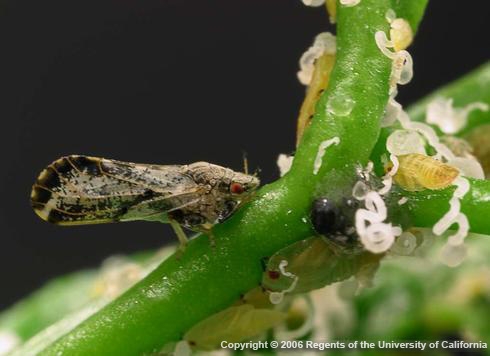
Asian citrus psyllid adults, yellow nymphs and white wax. (photo from UC IPM online)
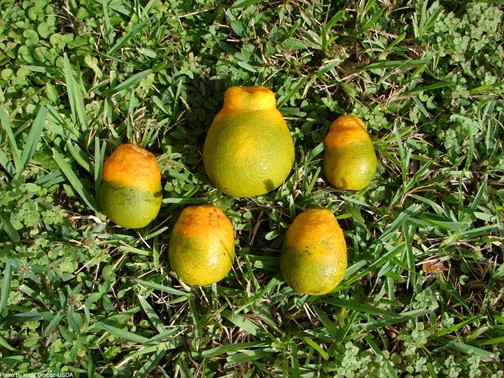
Citrus greening damage. (photo by USDAgov)
HLB still in the news
Douglas M. Main wrote about the detection of huanglongbing disease in Southern California in the New York Times Green Blog.
The greatest immediate threat may be to the homeowners of Los Angeles County, 60 percent of who have a citrus tree in their yard, said Elizabeth Grafton-Cardwell, UC Cooperative Extension specialist and research entomologist in the Department of Entomology at UC Riverside and director of Lindcove Research & Extension Center.
The citrus greening bacteria probably spread from the cutting of budwood illegally brought in from outside the country, the article says Grafton-Cardwell said.
HLB detected in LA area
The dreaded Huanglongbing, a devastating citrus disease, was detected in a Los Angeles County neighborhood last week, reported Diana Marcum and Rosanna Xia in the Los Angeles Times. It is the first confirmed case of the disease in California.
Asian citrus psyllid, which can spread the bacteria that cause the disease, is already infesting Southern California. Rachael Myrow of the California Report blogged about interviewing Mark Hoddle, UC Cooperative Extension specialist in the Department of Entomology at UC Riverside, in January about his efforts to fight the psyllid by releasing Punjabi wasps.
Beth Grafton-Cardwell, UC Cooperative Extension specialist based at UC Riverside and director of the Lindcove Research & Extension Center, has been educating backyard gardeners and commercial growers how to identify and control the insect.


